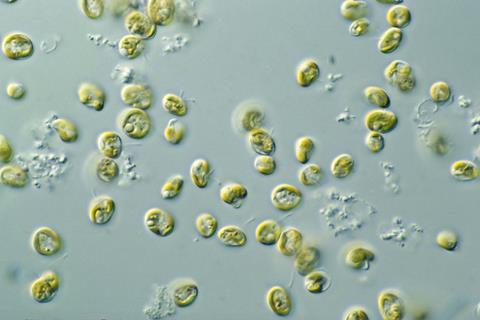Researchers have developed a bioink characterized by enhanced cell viability and printing resolution, using alginate derived from algae, a natural carbohydrate, and a harmless visible light.

The research findings of the team led by Professor Hyung Joon Cha from the Department of Chemical Engineering and the School of Convergence Science and Technology, and PhD candidate Sangmin Lee and Dr. Geunho Choi from the Department of Chemical Engineering at POSTECH, have been published in Carbohydrate Polymers.
3D bioprinting is a methodology employed in the fabrication of artificial organs or tissues through the use of bioinks which contain cells. This technique holds significant promise in the realms of tissue engineering and regenerative medicine while also attracting considerable attention within the foodtech sector due to its potential to produce cultivated meat, an emerging concept in future food production. Nevertheless, currently available bioinks exhibit limitations, impeding cell mobility and resulting in low cell viability and printing resolution.
3D printed bioink
To address these challenges, the research team devised a microgel utilizing a photocrosslinkable alginate. They then developed a 3D-printed bioink capable of facilitating free cell movement and proliferation by using this photocrosslinkable alginate microgel. This microgel bioink loaded with cells led to a 4-times increase in cell proliferation compared to conventional bioinks.
Furthermore, the microgel demonstrated reduced viscosity when subjected to external forces over a specified period, promptly recovering its initial shape even after deformation. These characteristics significantly increased the resolution and lamination capacity of the printing outcomes.
Professor Hyung Joon Cha who led the research explained: “We engineered functional tissue structures by employing a biomaterial-based bioink with exceptional and stable cell-loading capabilities for practical 3D printing.
“Future research and refinement of this technology are expected to propel its widespread adoption in the engineering of artificial organs and the production of cultivated meat.”
The research was sponsored by the Creative Innovation Program of POSCO Holdings and the Value-added Foodtech Development Program of the Ministry of Agriculture, Food and Rural Affairs.







No comments yet